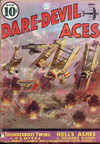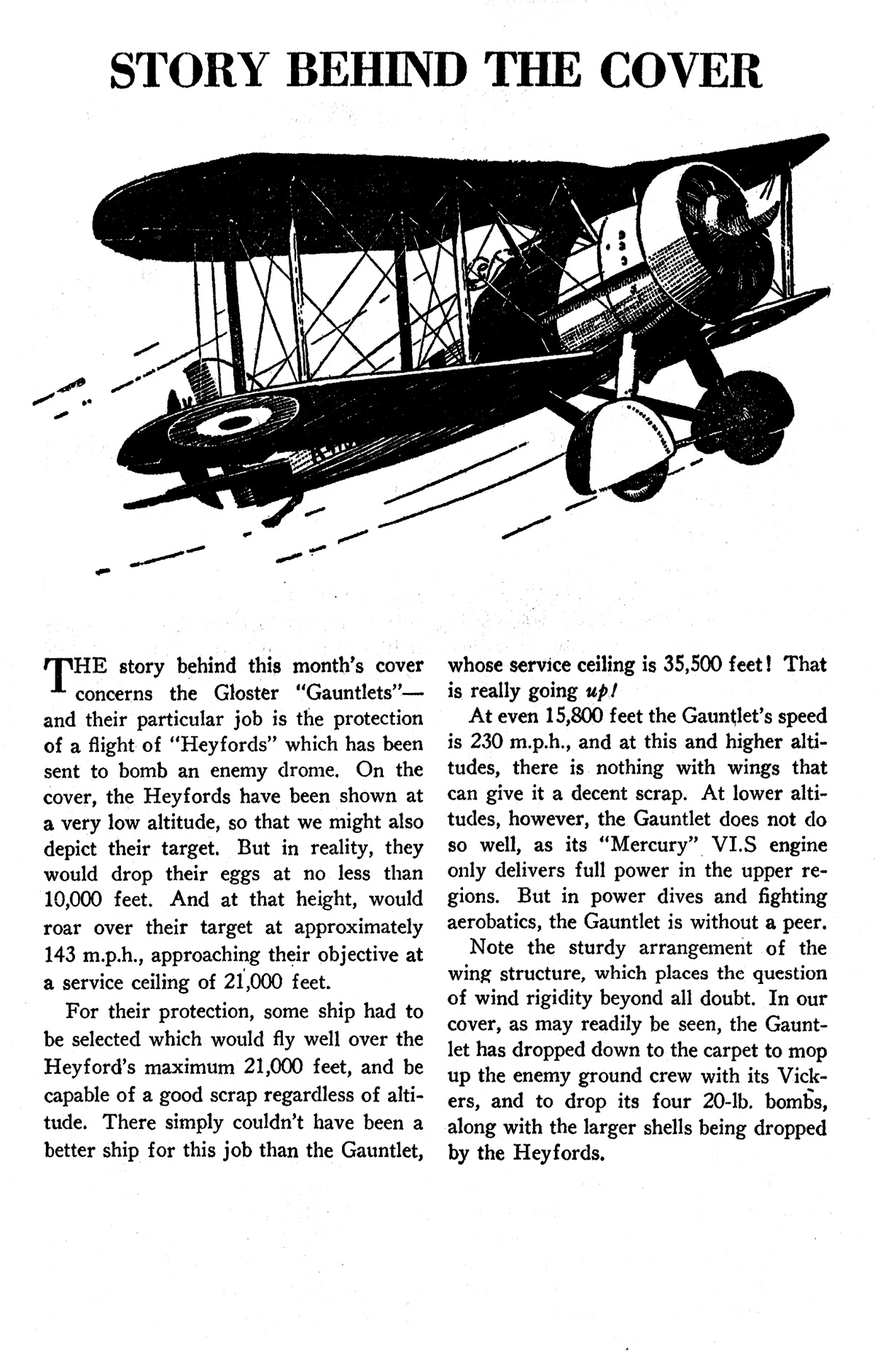THIS May we are once again celebrating the genius that is C.B. Mayshark! Mayshark took over the covers duties on Flying Aces from Paul Bissell with the December 1934 issue and would continue to provide covers for the next year and a half until the June 1936 issue. While Bissell’s covers were frequently depictions of great moments in combat aviation from the Great War, Mayshark’s covers were often depictions of future aviation battles and planes, but April 1936’s thrilling cover was a bit different, featuring the Trans-Atlantic Shuttle heading off over land towards the sea!
Flying the Trans-Atlantic Shuttle
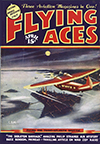 ALTHOUGH the art of aviation is today making great strides forward, flying, like air conditioning and television, will not enjoy its real “arrival” until tomorrow. True, the present generation is placing more and more emphasis on aeronautic progress, but the man in the street is still somewhat hampered by a kind of Nineteenth Century transportation hangover. His traditions tend to make him feel a lot happier on the ground. But even so, the speed of aero development is phenomenal.
ALTHOUGH the art of aviation is today making great strides forward, flying, like air conditioning and television, will not enjoy its real “arrival” until tomorrow. True, the present generation is placing more and more emphasis on aeronautic progress, but the man in the street is still somewhat hampered by a kind of Nineteenth Century transportation hangover. His traditions tend to make him feel a lot happier on the ground. But even so, the speed of aero development is phenomenal.
It is only a few short years since Lindbergh made his immortal flight across the grey wastes of the Atlantic. For completing that initial scheduled air trip to Europe—we say “scheduled” because he arrived non-stop at his chosen destination—he was hailed as a Twentieth Century Christopher Columbus. He was lauded as being years ahead of the rest of us.
But now we suddenly find that he was not so many years ahead—only about ten, it now appears. For already plans are being laid for regular passenger and mail service between North America and Europe via the air lanes. The launching of this service will constitute the dawn of that tomorrow we spoke of above.
Giant flying boats will soon ply East and West, transporting passengers over three thousand miles of water at speeds undreamed of thirty-five years ago. Steamers on the water below will look as if they are going backwards. Those who make the trip will have just about enough time to enjoy a detective novel and indulge in a rubber or so of bridge before they disembark at their destination, whether it be New York, London, or Paris. Businessmen will save valuable hours—indeed, valuable days. Much money will be saved by the commercial world. Best of all, a more neighborly spirit will come to exist between the two continents.
And so it can be seen that in spite of that oft-repeated warning that “speed will kill us all,” we are going ahead. Many of the old stick-in-the-muds, in fact, are now coming over to our side; but still others will not give way. “You’re fools,” they tell us, pointing a trembling finger in our direction. “God gave us feet as a means of locomotion,” they say, “and He gave us good, solid brown earth on which to walk—so why in the name of all that’s sensible don’t we use them and stop all this monkey business of tearing around the heavens in fearful flying machines?”
But the individuals with such beliefs will soon pass on, taking all their mediaeval hoopla with them into the “good, solid brown earth” of which they have so much to say.
You who read these words won’t have quite so much trouble in carrying out your ideas when you get the reins. And then, ludicrously enough, another generation will spring up after you which will think your ideas are old fashioned.
BE THAT as it may, trans-Atlantic travel by air is soon to be a reality. FLYING ACES, to be sure, cannot at this early date predict the precise means by which this route will be established. But the newspapers these days are telling us that the foundation stones are already being laid for the U.S.-to-Europe airline.
The names of Pan-American and Sikorsky have figured prominently in the plans, but these companies will probably not have the corner on the lucrative business which will ensue from this enterprise. There are several European organizations, notably Imperial Airways and Air France, which undoubtedly intend to share in the project.
Presumably, by the time the line is ready to carry passengers, a ship suitable for the route will have been developed. In light of experiments to date, it would seem that a flying boat capable of high speeds at great altitudes would be the most logical solution to the problem. Such a plane would carry from forty to fifty passengers and travel at 250-300 m.p.h. at about 35,000 feet. The planes would fly from Northern Europe to Newfoundland, Bermuda, or both.
Bringing such a big ship into the busy and often fogbound harbors of Eastern North America might be a risky and hazardous undertaking for a large flying boat. Not that it couldn’t be accomplished. It could. But a more feasible and reasonable method has come to our minds—the use of shuttle service amphibians which could land on our larger Eastern airports as well as on the sea.
The idea of a shuttle service for air travel is not new. As a matter of fact, the Department of Commerce now has before it specifications for three ships, one of which will be built in quantity to supplement the long distance runs of the new high-altitude airliners which will replace the transports now being used on the transcontinental routes. Before long the word “shuttle” may be just as common to air travel as it is at the present time to our New York subway transportation.
The Sikorsky Manufacturing Company is building nine of the recently developed S-43’s for Pan-American Airways. The ship is brand new, and it incorporates all the latest aids to aerial navigation. It is of the amphibian type and is powered with two radial engines. Its seating capacity is for less than twenty passengers. Such a ship would be ideal for a shuttle service between New York and the two terminals of the big ocean-going transports at Newfoundland and Bermuda. Passengers could embark at Floyd Bennett Field or Newark and be whisked in a few hours to either of the two bases. They would there make connections with a trans-Atlantic airliner for European ports.
ON OUR cover this month we show a Sikorsky S-43 flying out over New York at night bound for Bermuda or Newfoundland. The passengers aboard are confident, and they know that in an amazingly short period of time they will be in Europe—three thousand miles from New York.
Of course, it is impossible for us to say definitely that the trans-Atlantic route will be carried on exactly as we have pictured it. The whole thing is a matter of conjecture at the present time. But it will be well if we prepare ourselves mentally for what is bound to come. Within the next two or three years, trans-Atlantic air travel will be a reality.

Flying the Trans-Atlantic Shuttle: Thrilling Story Behind This Month’s Cover
Flying Aces, April 1936 by C.B. Mayshark










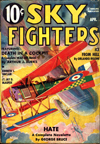
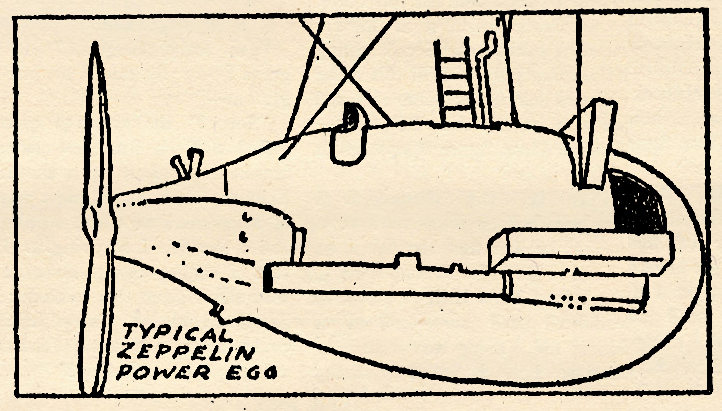
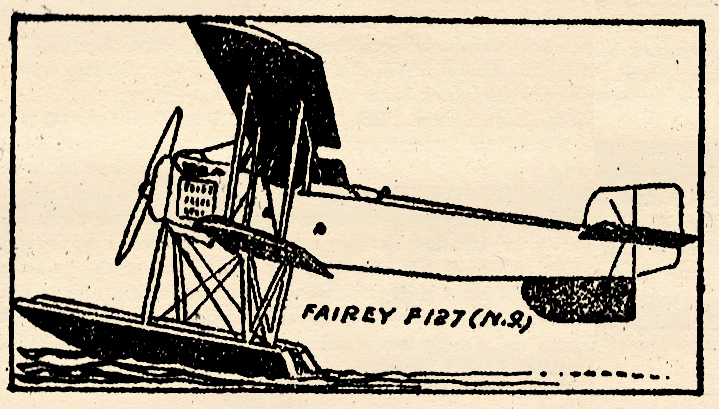
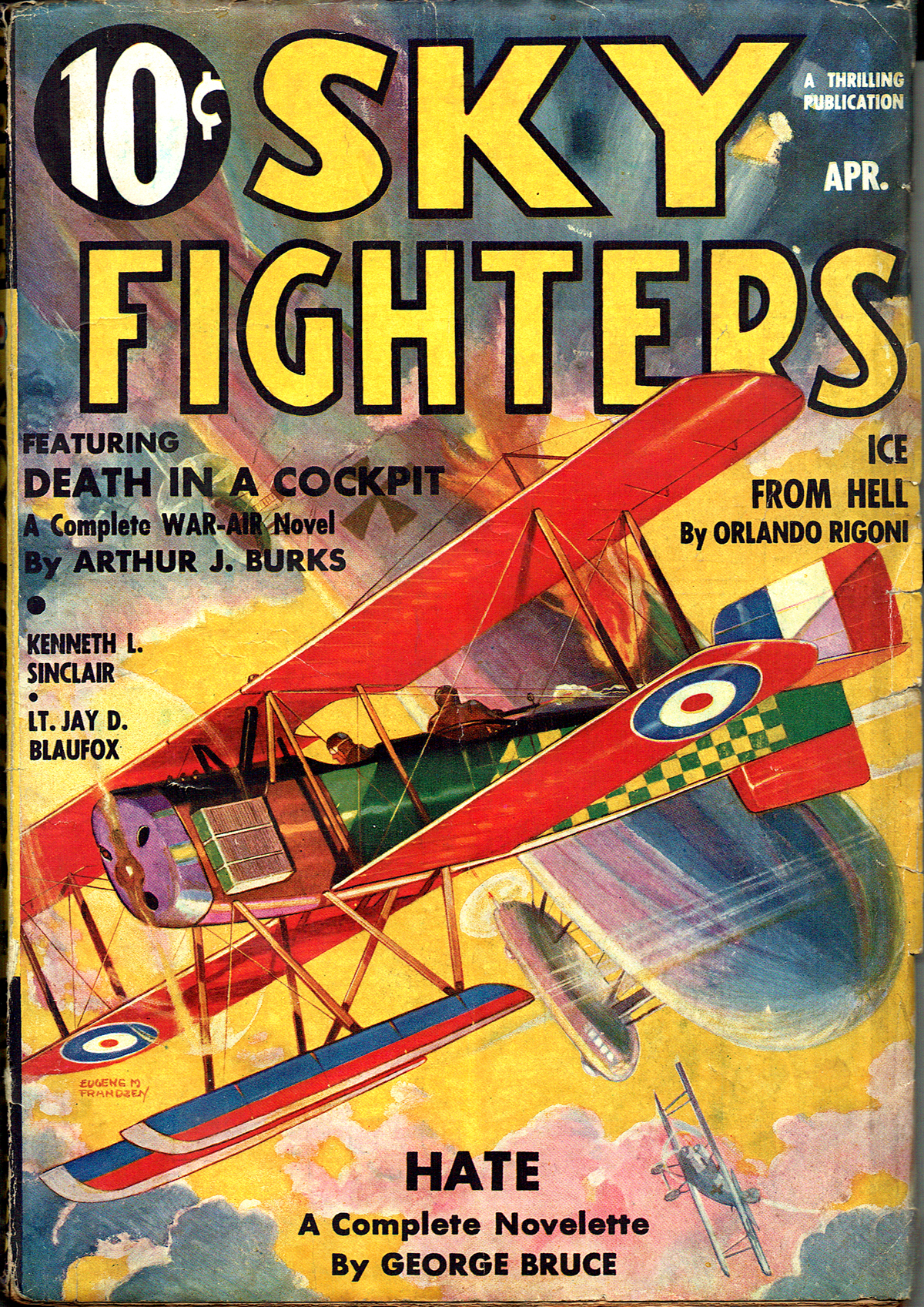
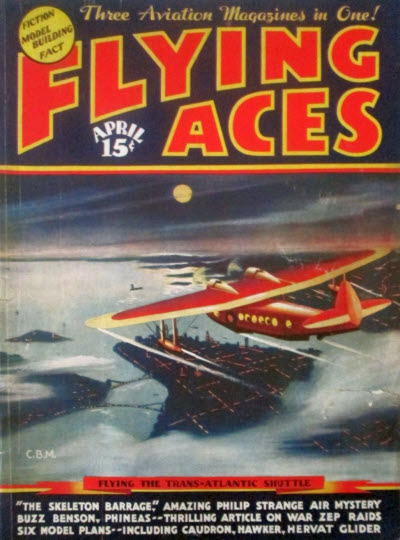 That sound can only mean one thing—that Bachelor of Artifice, Knight of Calamity, born on April Fool’s day and reared in raillery, an alumnus of Doctor Merlin’s Camelot College for Conjurors is back and this time the marvel from Boonetown runs for the looney bin rather than face the German’s latest and greatest invention—a bullet that can destroy a plane in one shot!
That sound can only mean one thing—that Bachelor of Artifice, Knight of Calamity, born on April Fool’s day and reared in raillery, an alumnus of Doctor Merlin’s Camelot College for Conjurors is back and this time the marvel from Boonetown runs for the looney bin rather than face the German’s latest and greatest invention—a bullet that can destroy a plane in one shot!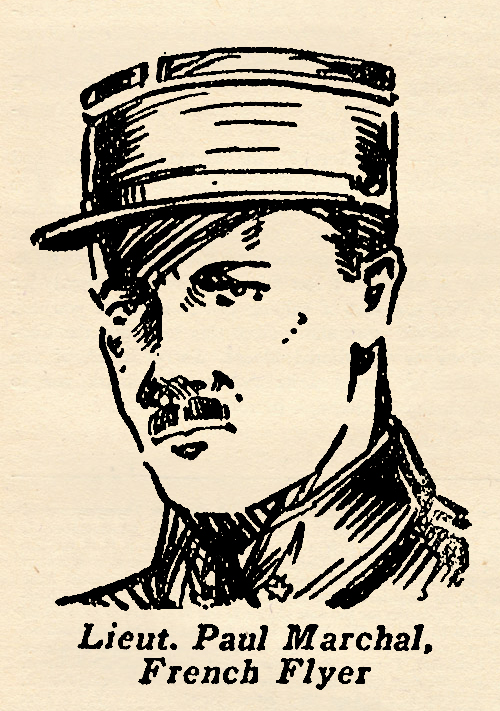 colors on the first day war was declared, and it was he that answered the challenge of that bold German, lieutenant Max Immelmann, when the latter bombed Paris with leaflets calling for surrender. Immelmann had to fly a matter of but a hundred kilometers, or less, to get over the city of Paris. But when Marchal answered his challenge with an identical flight to Berlin, he had to fly 8QO kilometers.
colors on the first day war was declared, and it was he that answered the challenge of that bold German, lieutenant Max Immelmann, when the latter bombed Paris with leaflets calling for surrender. Immelmann had to fly a matter of but a hundred kilometers, or less, to get over the city of Paris. But when Marchal answered his challenge with an identical flight to Berlin, he had to fly 8QO kilometers.